Acesulfame
- CAS No.
- 33665-90-6
- Chemical Name:
- Acesulfame
- Synonyms
- ACESULFAME K;Ansaimi;RARECHEM AM UC 0205;SWEET ONE;ACESULFAME POTASSIUM SALT;SUNETTE;Anselmi.;Sunett(R);Acesulfam;acetosulfam
- CBNumber:
- CB1224120
- Molecular Formula:
- C4H5NO4S
- Molecular Weight:
- 163.15
- MDL Number:
- MFCD00868126
- MOL File:
- 33665-90-6.mol
- MSDS File:
- SDS
| Melting point | 123-123.5° |
|---|---|
| Density | 1.83 |
| pka | -0.28±0.40(Predicted) |
| Water Solubility | 270 g/L at 20 ºC |
| CAS DataBase Reference | 33665-90-6(CAS DataBase Reference) |
| FDA 21 CFR | 172.800 |
| FDA UNII | MA3UYZ6K1H |
SAFETY
Risk and Safety Statements
| Symbol(GHS) |  GHS07 |
|---|---|
| Signal word | Warning |
| Hazard statements | H302-H315-H319-H335 |
| Precautionary statements | P261-P305+P351+P338 |
| WGK Germany | 1 |
| RTECS | RP4489165 |
Acesulfame price
| Manufacturer | Product number | Product description | CAS number | Packaging | Price | Updated | Buy |
|---|---|---|---|---|---|---|---|
| American Custom Chemicals Corporation | CHM0078535 | ACESULFAME 95.00% | 33665-90-6 | 5G | $909.56 | 2021-12-16 | Buy |
| aablocks | AA00K3WY | 6-Methyl-1,2,3-oxathiazin-4(3H)-one2,2-dioxide | 33665-90-6 | 10g | $1335 | 2021-12-16 | Buy |
| aablocks | AA00K3WY | 6-Methyl-1,2,3-oxathiazin-4(3H)-one2,2-dioxide | 33665-90-6 | 500mg | $248 | 2021-12-16 | Buy |
| Crysdot | CD11141475 | 6-Methyl-1,2,3-oxathiazin-4(3H)-one2,2-dioxide 97% | 33665-90-6 | 25g | $334 | 2021-12-16 | Buy |
| aablocks | AA00K3WY | 6-Methyl-1,2,3-oxathiazin-4(3H)-one2,2-dioxide | 33665-90-6 | 1g | $379 | 2021-12-16 | Buy |
Acesulfame Chemical Properties,Uses,Production
Description
Acesulfame pottasium (also known as acesulfame K or Ace K) is a calorie free sugar substitute (artificial sweetener). It is ~ 200x sweeter than table sugar and approved for use in food as a non-nutritive sweetener. It is sold under the brand names Sunett® and Sweet One®.
FDA approved it as a general purpose sweetener and flavor enhancer in food, except in meat and poultry, under certain conditions of use. It stays sweet even when used at high temperatures during baking, making it suitable as a sugar substitute in baked goods. Acesulfame potassium has been approved for use in a variety of food products including frozen desserts, candies, beverages, baby food, and baked goods. More than 90 studies support its safety.
Acesulfame K contains the carcinogen methylene chloride. Long-term exposure to methylene chloride can cause headaches, depression, nausea, mental confusion, liver effects, kidney effects, visual disturbances, and cancer in humans.
Identification test
Solubility: easily soluble in water. Very slightly soluble in ethanol. Measure it according to the OT-42 method.
Potassium test result (2 g of test residue): positive (IT-27).
UV absorbance: take 10 mg of the sample to dissolve in 1000 ml of water and the solution had a maximum absorption peak at 227 ± 2 nm (see GT-29).
Take 0.2 g of the sample, add 2 ml of the acetic acid test solution (TS-1) and 2 ml of water. Add several drops of 10% sodium hexachlorocyclohexane solution to this solution, after which there should be a yellow precipitate.
Content analysis
Accurately weighed 0.15g of pre-dried sample, dissolve in 50.0ml glacial acetic acid; apply 0.1mol/L perchloric acid for potentiometric titration; or add two drops of crystal violet test solution (TS-74), titrate with 0.1mol/L perchloric acid titration to blue-green end point, and maintain 30s to perform a blank test at the same time and correct the necessary error. Per mL, 0.1 mol/L perchloric acid is equivalent to 20.12 mg of acesulfame potassium (C4H4NO4SK).
Toxicity
ADI 0-15 (FAO/WHO, 2001).
Being safe to be used in food products (FDA, §172.800, 2000).
Usage limit
GB 2760-2001 (g/kg): beverages, ice cream, pastries, confectionery, jam (excluding canned), pickles, candied fruit, jelly candy, canned rice porridge, jelly, bread, 0.3; dining table-purpose sauce(flake like and powder like): 40 mg per tablet and package; Flavorless yogurt, 0.35; flavoring, 0.5; sugarless (low sugar) candy and gum, 2.0; sugarless chewing gum, 4.
Limited to GMP (FDA, § 172.800, 2000).
Chemical properties
It appears as colorless to white crystalline powder, being odorless with a strong sweetness which is about 150 times that of the sucrose; the flavor properties are similar as that of saccharin. It has bitter at high concentrations and has a good mixing property with sugar alcohols and sucrose, etc., being stable as well. It has a melting point of about 225 °C, the maximum absorption spectrum of 227nm and density 1.83g/cm3 (loose density 1.1~1.3kg/dm3). It is non-hygroscopic, being stable at room temperature, easily soluble in water (30g/100ml, 20 ℃), slightly soluble in ethanol and other organic solvents.
Uses
1. Non-nutritional sweetener, being able to be widely used in various foods, even in drinks of Ph3.0, it can also be used.
2. For beverages, food, health products and so on
3. Food sweeteners
4. Acesulfame belongs to the fourth generation synthetic sweeteners with single administration accompanied with a certain bitter taste. It has a synergistic effect when being used in combination with aspartame or cyclamate and being able to mask the bitter taste. After intake of the human body, it is not absorbed and does not produce heat, being suitable for patients with diabetes and obesity. It can be used as pastry, jam (excluding canned food), pickles, candy, candied fruit, beverage, ice cream and jelly candy with the maximum dosage of 0.3g/kg; it can also be used as table sweetener (flake or powder) with 40 mg per tablet or per packet.
Production method
There are many patents on the preparation of acesulfame, here are four methods.
Aminosulfonic acid and diketene method
Take aminosulfonic acid, triethylamine, diketene and potassium hydroxide as raw material for synthesis. 9.7 g (0.1 mol) of sulfamic acid was added to 16 mL (0.12 mol) of triethylamine and stirred until complete dissolution. 8 mL 0.104 mol of diketene was added drop wise at 0 ° C, and the mixture was stirred at room temperature until completion of the reaction. Add hexane for precipitation and further refinement and the solvent was removed under reduced pressure to obtain 27 to 28 g of a syrup in a yield of 95.7 to 99.0%. The slurry and SO3 were simultaneously added to the container containing CH2Cl2 for stirring continuously of 1-5 hours before the removal of solvent under reduced pressure. The residue was treated with methanol-potassium hydroxide solution under controlling Ph value of 8 to 10. The solvent was removed and dried to give acesulfame potassium salt in 69% yield. This method is easy to obtain raw materials with mild conditions but the process is complex and the yield is not high.
Aminosulfonyl fluoride and diketene method.
To a solution of 76 g (0.55 mol) of potassium carbonate powder and 500 mL of acetone, 57.8 mL (1.0 mol) of sulfamic acid fluoride was added, and 84.3 mL (1.1 mol) of diketene was added dropwise over 15 min. Stir for reaction at 0 °C for 30 min. The reaction is exothermic with the temperature be controlled below 30℃ until the CO2 is completely released before stopping the reaction. The reaction mixture was suction filtered and washed with a small amount of acetone to give the potassium salt of the colorless crystalline acetoacetylamino-N-sulfonyl fluoride. The crystal was stirred together with 4 to 6 mol of methanol-potassium hydroxide solution to cyclize to obtain the acesulfame potassium salt in a yield of 93% of the theoretical amount. This method is easier to obtain raw materials with mild process conditions. The operation is also not complicated, being the ideal preparation method.
Acetoacetamide and fluorinated sulfuryl fluoride method.
Take acetoacetamide, potassium carbonate, fluorinated sulfuryl fluoride and potassium hydroxide as raw materials; (0.1 mol) of acetoacetamide and 69 g (0.5 mol) of potassium carbonate were added to 150 mL of acetone and 8 mL of water. After stirring uniformly, 15.3 g (0.15 mol) of fluorinated sulfuryl fluoride gas was introduced at room temperature for reaction at which point the reaction mixture was allowed to warm to 40 ° C and stirred for 2 h before suction filtration. The filter cake was put into an excess of hydrochloric acid solution of ice to dissolve and react. And then extracted with ethyl acetate. The extract was dried over anhydrous sodium sulfate, and the solvent was removed under reduced pressure to obtain acesulfame. It will react with methanol-potassium hydroxide solution to obtain acesulfame potassium salt with drying to get 14.1 g finished product with the yield of 86.5% of the theoretical amount.
This method is not harsh reaction conditions, the yield is high, but some raw materials are not easy to get.
Acetoacetamide and sulfur trioxide method.
In an inert organic or inorganic solvent, send through SO3 into acetoacetamide for recycling condensation, generating acetoacetyl sulfamic acid. After separation, it is reacted with potassium hydroxide to derive the products. Dissolve 5.1 g (50 mmol) acetoacetamide in 50mLCH2Cl2; dissolve 8 mL (200 mmo1) liquid SO3 in 50 mL Mlch2Cl2; then at-60 ℃, then drop the former one to the latter for stirring reaction of 2h. Add 50 mL acetoacetamide and water and the organic phase was separated after extraction and further subject to aqueous phase extraction with ethyl acetate for twice and combined into the organic phase. After drying over anhydrous sodium sulfate, ethyl acetate was recovered by evaporation. The residue was dissolved in methanol and neutralized with methanol-potassium hydroxide solution. Acesulfame potassium salt was then precipitated and dried, yielding 3.1 g of product in a yield of 31% of the theoretical amount. This method needs to be carried out at low temperature, and the yield is not high.
It can be obtained through the addition reaction of fluorosulfonyl isocyanate (or chlorosulfonyl isocyanate) with various active methylene compounds (including α-unsubstituted ketone, β-diketone, β-keto acid and β-ketoester, etc.) addition .
For example, from the addition reaction between tert-butyl acetoacetate and fluorosulfonyl isocyanate.
References
[1] https://www.fda.gov
[2] Wei-na Cong, Rui Wang, Huan Cai, Caitlin M. Daimon, Morten Scheibye-Knudsen, Vilhelm A. Bohr, Rebecca Turkin, William H. Wood III, Kevin G. Becker, Ruin Moaddel, Stuart Maudsley , Bronwen Martin (2013) Long-Term Artificial Sweetener Acesulfame Potassium Treatment Alters Neurometabolic Functions in C57BL/6J Mice, Plos One, 8, e70257
Uses
Acesulfame-K is a non-nutritive sweetener also termed acesulfame potassium. it is a white, crystalline product that is 200 times sweeter than sucrose. it is not metabolized in the body. it has some metallic off-tastes. it is readily soluble and heat and acid stable. it provides a synergistic sweetening effect combined with other sweeteners. it is used in beverages, desserts, confectionery, and bakery products.
Definition
ChEBI: A sulfamate ester that is 1,2,3-oxathiazin-4(3H)-one 2,2-dioxide substituted by a methyl group at position 6.
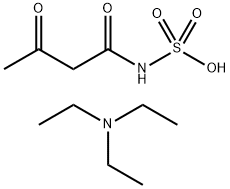
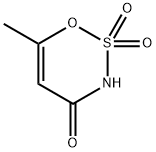
Acesulfame Preparation Products And Raw materials
| Supplier | Tel | Country | ProdList | Advantage | |
|---|---|---|---|---|---|
| Nanjing Sky Hope Tongyuan Biological Engineering Co., Ltd. | +86-0086-025-69916489 +86-18852044786 | tongyuansales@vip.sina.com | China | 323 | 58 |
| Wuhan Biet Co., Ltd. | +8617320528784 | min@biet.com.cn | China | 41 | 58 |
| Hebei Mojin Biotechnology Co., Ltd | +8613288715578 | sales@hbmojin.com | China | 12453 | 58 |
| airuikechemical co., ltd. | +undefined86-15315557071 | sales02@airuikechemical.com | China | 994 | 58 |
| Shaanxi TNJONE Pharmaceutical Co., Ltd | +86-13474506593 +86-13474506593 | sarah@tnjone.com | China | 848 | 58 |
| Henan Tianfu Chemical Co.,Ltd. | +86-0371-55170693 +86-19937530512 | info@tianfuchem.com | China | 21695 | 55 |
| Hefei TNJ Chemical Industry Co.,Ltd. | +86-0551-65418679 +86-18949832763 | info@tnjchem.com | China | 2989 | 55 |
| career henan chemical co | +86-0371-86658258 | sales@coreychem.com | China | 29914 | 58 |
| SHANDONG ZHI SHANG CHEMICAL CO.LTD | +86 18953170293 | sales@sdzschem.com | China | 2931 | 58 |
| Hubei Jusheng Technology Co.,Ltd. | 18871490254 | linda@hubeijusheng.com | CHINA | 28180 | 58 |
Related articles
- Acesulfame: Properties as Food Additive, Scope of Use and Safety
- Acesulfame is a stable, sweet, and inexpensive white powder used as a synthetic sweetener in various food and beverage product....
- Jan 30,2024
- Acesulfame:Preparation, Metabolism, Stability and Application Studies
- Acesulfame is used as artificial sweetener for food, also used in cosmetics. High-purity acesulfame can thus be produced on a ....
- Mar 2,2023
View Lastest Price from Acesulfame manufacturers
| Image | Update time | Product | Price | Min. Order | Purity | Supply Ability | Manufacturer | |
|---|---|---|---|---|---|---|---|---|
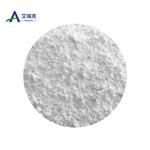 |
2024-04-07 | Acesulfame K (Acesulfame)
33665-90-6
|
US $0.00-0.00 / Kg | 1Kg | 99.9% | 200tons | airuikechemical co., ltd. | |
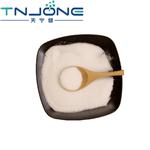 |
2024-03-27 | Acesulfame Potassium/Acesulfame-K Powder Sweeteners Acesulfame-K
33665-90-6
|
US $0.00 / kg | 1kg | 99% | 20tons | Shaanxi TNJONE Pharmaceutical Co., Ltd | |
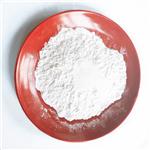 |
2023-06-29 | Acesulfame
33665-90-6
|
US $0.00 / KG | 1KG | 99% | 50000KG/month | Hebei Mojin Biotechnology Co., Ltd |
-

- Acesulfame K (Acesulfame)
33665-90-6
- US $0.00-0.00 / Kg
- 99.9%
- airuikechemical co., ltd.
-

- Acesulfame Potassium/Acesulfame-K Powder Sweeteners Acesulfame-K
33665-90-6
- US $0.00 / kg
- 99%
- Shaanxi TNJONE Pharmaceutical Co., Ltd
-

- Acesulfame
33665-90-6
- US $0.00 / KG
- 99%
- Hebei Mojin Biotechnology Co., Ltd





